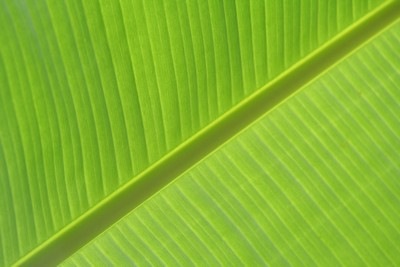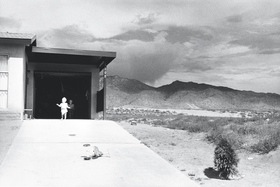Heidelberg is focusing its drupa 2012 trade show presence on its portfolio of technologies and services under the banner "Discover HEI" - Illustration: Heidelberger Druckmaschinen AG.
DRUPA 2012 Floorplan - Heidelberg is presenting its solutions portfolio at drupa 2012 in Hall 1 in form of complete print shop workflows for commercial and packaging printing (Illustration: Heidelberger Druckmaschinen AG)
During the printing industry trade show in Düsseldorf, Heidelberg is presenting a portfolio want to span all key market developments in the sector today to enable customers to seize on the latest trends in the industry and build them into their operations. The trade show presentation will focus in particular on lean production, green printing, web-to-print, print-on-demand, differentiation through coatings and special effects, the future of packaging printing and gaining an edge through the latest know-how. To reflect the trade show banner "Discover HEI" and give visitors a clear point of reference, each of these seven market trends will be summed up with a "HEI" title.
Efficiency, cost optimization, and speed are expected throughout the advertising sector. When it comes to print production, return on investment is what matters to the customer who is looking for the best product at the best price. The only way that can be achieved is by streamlining the entire production workflow using process optimization and the fastest possible production processes. According to Heidelberg, this is made possible by HEI Productivity solutions.
“HEI Productivity”. Advertising motif from the Heidelberg drupa campaign. Illustration: Heidelberger Druckmaschinen AG
 © Gautier Willaume
© Gautier Willaume“HEI Flexibility”. Advertising motif from the Heidelberg drupa campaign. Illustration: Heidelberger Druckmaschinen AG
Every type of surface finishing technique such as coating, embossing, and cold foil applications is used to make a printed product stand out and to enhance its impact or durability. When it comes to coatings and special effects, print shops need to adapt to meet the needs of customers and print buyers for a process-optimized production workflow that keeps costs down, doesn't waste time, generates added value, and ensures the final product stands out. Coatings, special effects and the skilled combination of various surface finishing options represent a core competency that delivers maximum benefits and ensures an eye-catching result. Heidelberg is presenting these opportunities under “HEI Emotions”.
Packaging is printed communication and often offers much more than just words and images. It doesn't serve simply to protect products and aid their transport and storage either. Packaging makes a direct statement about the product inside. It communicates, transfers knowledge, and is often the decisive factor in a customer's decision to purchase at the point of sale. In other words, it is largely packaging that encourages us to buy a product. Coatings and special effects are often used to make products stand out at the point of sale and Heidelberg is exhibiting all the company’s options under “HEI End”.
As customers become more sensitive to prices, run sizes decrease, and job variation increases, print shops in industrialized nations are going to have to reorganize their production systems so that they are even more flexible and efficient. Throughput times in print production are becoming ever tighter and, in response, Heidelberg is unveiling a Speedmaster XL 105 with a production speed of 18,000 sheets per hour in perfecting mode at drupa 2012.

 Heidelberg is focusing its drupa 2012 trade show presence on its portfolio of technologies and services under the banner "Discover HEI" - Illustration: Heidelberger Druckmaschinen AG.
Heidelberg is focusing its drupa 2012 trade show presence on its portfolio of technologies and services under the banner "Discover HEI" - Illustration: Heidelberger Druckmaschinen AG. DRUPA 2012 Floorplan - Heidelberg is presenting its solutions portfolio at drupa 2012 in Hall 1 in form of complete print shop workflows for commercial and packaging printing (Illustration: Heidelberger Druckmaschinen AG)
DRUPA 2012 Floorplan - Heidelberg is presenting its solutions portfolio at drupa 2012 in Hall 1 in form of complete print shop workflows for commercial and packaging printing (Illustration: Heidelberger Druckmaschinen AG)  “HEI Productivity”. Advertising motif from the Heidelberg drupa campaign. Illustration: Heidelberger Druckmaschinen AG
“HEI Productivity”. Advertising motif from the Heidelberg drupa campaign. Illustration: Heidelberger Druckmaschinen AG “HEI Flexibility”. Advertising motif from the Heidelberg drupa campaign. Illustration: Heidelberger Druckmaschinen AG
“HEI Flexibility”. Advertising motif from the Heidelberg drupa campaign. Illustration: Heidelberger Druckmaschinen AG Guillermo Srodek-Hart
Guillermo Srodek-Hart 
 Garry Winogrand
Garry Winogrand Luigi Ghirri
Luigi Ghirri Shomei Tomatsu
Shomei Tomatsu Guido Guidi
Guido Guidi Robert Häusser
Robert Häusser Balthasar Burkhard
Balthasar Burkhard Lewis Baltz
Lewis Baltz Andreas Züst
Andreas Züst Dominik Hodel
Dominik Hodel Robert Frank
Robert Frank Axel Hütte
Axel Hütte


 © Centre Pompidou/ Visuel Pierre Vanni,
© Centre Pompidou/ Visuel Pierre Vanni,  Dessin de Takemiya Keiko
Dessin de Takemiya Keiko  Manhwa The spirit of the universe and the meaning of life
Manhwa The spirit of the universe and the meaning of life 
 ASTRO BOY, extrait du film d’animation
ASTRO BOY, extrait du film d’animation










 LANCE BALDERSON painting’s detail © Lance Balderson
LANCE BALDERSON painting’s detail © Lance Balderson